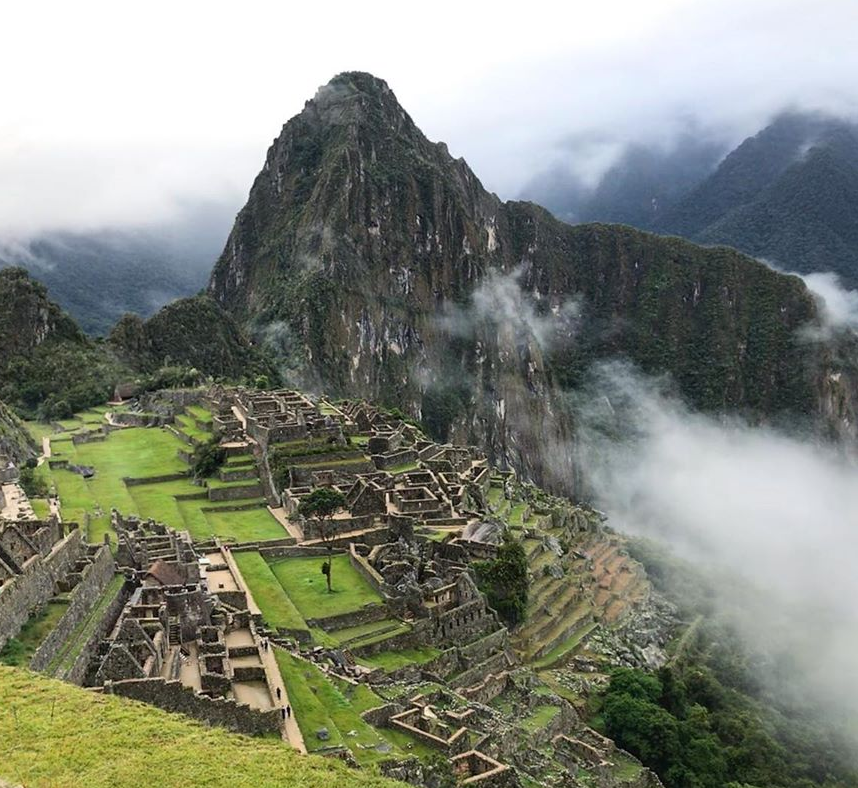Machu Picchu
THIS MYSTERIOUS CITY, CLINGING TO A REMOTE RIDGE HIGH
IN THE ANDES, WAS BUILT, LIVED IN AND DESERTED IN LESS THAN
100 YEARS – THEN LOST TO CIVILISATION FOR CENTURIES.
weary limbs, gasping lungs and a thudding heart are all forgotten as you stand at Intipunku (Sun Gate). Through the dawn mist you catch a glimpse of a terrace, then stone walls, and gradually a derelict city unveils before you.
This view of Machu Picchu perched on a ridge with the distinctive peak rising up behind is iconic – the heart of Peruvian tourism, mass-produced on postcards and travel brochures. But details are lost to this armchair viewpoint: the llamas casually grazing, the tightly packed stonework, the carved shrines. Meandering around the stone buildings, you admire the precision engineering and wonder what role this ancient city played in Incan life.
The window of the Temple of the Sun apparently frames the constellation Pleiades – a symbol of crop fertility, while the shrine tucked beneath the temple remains a mystery – possibly a
mausoleum to house royal mummies. As you amble between the crumbling ruins, you can imagine this city as a remote escape for a great Incan emperor.
The lost city
The legend that the lost city of Vilcabamba might really exist was enough to entice American historian Hiram Bingham away from his post
at Yale. Enlisting a local guide, in early 1911 Bingham set off into the Andean rainforest in search of this hidden city.
While Bingham did not discover Vilcabamba, what he stumbled onto has become one of the most renowned archaeological sites in the world. Machu Picchu sits on a remote, narrow mountain ridge 2450m above sea level. It was built in the 15th century for the
upstart Incan emperor Pachacuti.
Its exact function remains unclear, but it’s believed to have been some sort of royal retreat. Constructing Machu Picchu
The city was made up of around 140 buildings, including temples, shrines, royal residences and thatch-roofed houses, interspersed by small parks and numerous water fountains. Thousands of stones, some weighing more than 20 tonnes, were used to construct the city. The Inca did not use wheels to transport the blocks, so exactly how they moved them remains somewhat of a mystery.
Knobs were found on a few stones, suggesting they were hauled by hand up the slopes.Despite having only primitive
tools, the builders carved the stones with incredible precision, cutting blocks to fi t tightly together and seamlessly sculpting buildings around the natural contours of the landscape. This remote outpost of civilisation survived nearly 600 years of earthquakes, torrential rains and mudslides.






Comments
Post a Comment